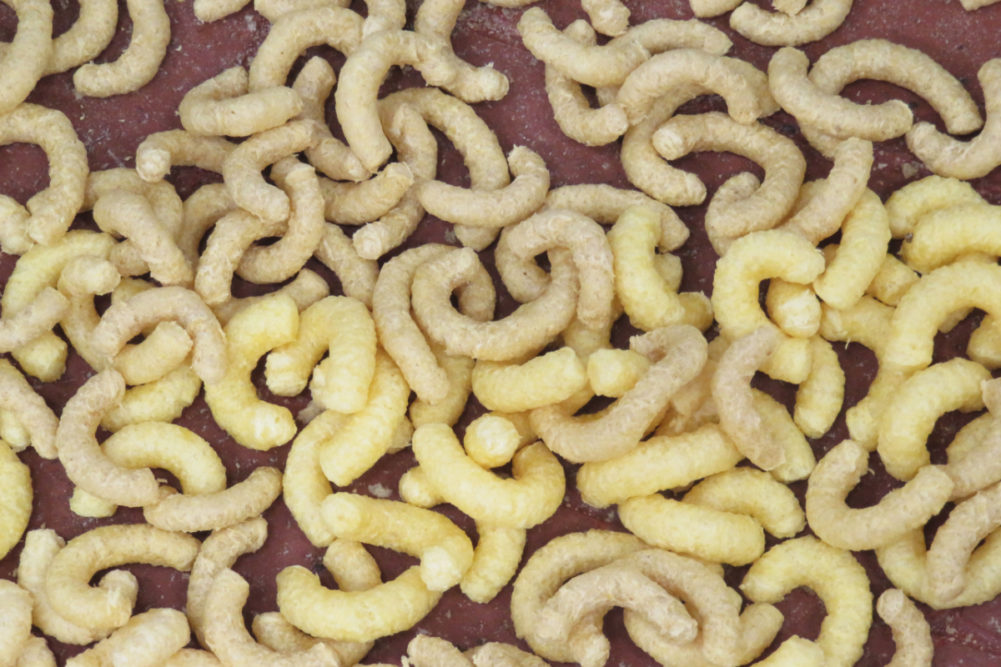OKLAHOMA CITY — Ingredient costs, more so than consumer perception, could stand in the way of cricket powder bringing its nutrition and sustainability benefits to the food and beverage industry, said Aaron T. Dossey, PhD, president, founder and owner of All Things Bugs, LLC.
“The marketing – they call it the ‘yuck’ factor or public perception – is not as big a deal as the cost,” he said.
Multinational food and beverage companies have faith that their marketing teams could convince consumers to eat products containing cricket powder, he said.
Bringing down ingredient costs will require investments and automation of cricket farming, Dr. Dossey said. All Things Bugs, Oklahoma City, offers GrioPro brand cricket powder. Dr. Dossey is looking for ways to get the cost down to $18 wholesale, but that still would not be low enough.
“We need to really to get down to $10 a lb, I’ve been told by several big companies,” he said.
GrioPro cricket powder is about 67% protein and 19% oil, Dr. Dossey said. Cricket powder contains all eight essential amino acids.
New York-based Exo already sells protein bars containing cricket powder in the United States. Other possible applications are protein shakes, tortilla chips and extruded snacks, Dr. Dossey said. All Things Bugs hopes to introduce cereal with cricket powder in the future.
“If you blend it in with other products, like you would any kind of other protein ingredient, you don’t have to do a whole lot of (flavor) masking.” Dr. Dossey said.
Nearly 100% of the ingredients may be cricket powder in some meat alternative applications like sausage.
“They’re actually contributing to the flavor profile,” he said of the crickets. “They do have a very meat-like flavor, a pork or chicken flavor.”
One problem to avoid is chitin, which gets stuck in consumers’ teeth. All Things Bugs uses a proprietary process to finely grind up the crickets and alleviate the texture issue with chitin. Chitin also is in shrimp. All Things Bugs puts an allergen statement on its product since shellfish allergens overlap with cricket powder.
“One of the proteins that people are allergic to with shrimp are the same proteins that they would be allergic to with insects,” Dr. Dossey said.
Dr. Dossey received a PhD in biochemistry and molecular biology from the University of Florida in 2006. An entomologist, he founded All Things Bugs in 2001 after receiving a grant from the Bill and Melinda Gates Foundation. Over the years All Things Bugs in total has received over $4.1 million in funding, including grants from the US Department of Agriculture on insect processing, insect-based food development and improved insect farming technologies.
Cricket farming requires less land, water, feed and pesticide use than livestock as well as generating lower levels of greenhouse gasses, according to All Things Bugs. To generate 1 kilogram (2.2 lbs) of digestible cricket requires 2.1 kilograms of feed, which compares to 25 kilograms of feed for beef, 9.1 kilograms of feed for pork and 4.5 kilograms of feed for chicken, according to the company. Crickets need little water since their tough exoskeleton prevents them from drying out. It’s estimated 8 square meters are needed to grow a lb of cricket, which compares to 115 square meters for beef.
“Insects can be grown in small containers, very, very space efficient,” Dr. Dossey said, adding cricket farming can be done vertically and in cities.
Bins for cricket farming in the United States tend to run 6 feet long by 1.5 feet wide by 1.5 feet deep, he said. The bin dimensions in Europe and Canada are more like 10 feet long and 3 feet wide. Southeast Asian farmers like to use lean-to barns for cricket farming. Grass is a popular food for insects.
Cost hurdles come in the form of economies of scale. Much of the farming still is done manually. Automation of the feeding, watering and harvesting of insects could bring down costs
“We need larger companies to invest in utilizing this ingredient at a larger scale, and then we can drop our price,” Dr. Dossey said.






